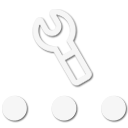I'm going to be building my own roof rack and need to decide how to design it. I'm thinking of using almost all 80/20 extruded aluminum. Problem is, I've literally never owned a vehicle with a full roof rack like this so I don't know what I like or not. I really really like the look of the Frontrunner Slimline II rack and so my plan was to basically copy that but I've heard wind noise is a big deal. I want to ask all you experts on what your real-life experience has taught you. Any tips would be appreciated (with rationale!)
Roof rack design preference: Longitudinal or lateral slats?
- Thread starter nateh
- Start date





